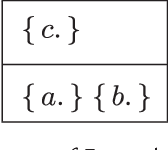Bela Stantic
Assessing fish abundance from underwater video using deep neural networks
Jul 16, 2018



Abstract:Uses of underwater videos to assess diversity and abundance of fish are being rapidly adopted by marine biologists. Manual processing of videos for quantification by human analysts is time and labour intensive. Automatic processing of videos can be employed to achieve the objectives in a cost and time-efficient way. The aim is to build an accurate and reliable fish detection and recognition system, which is important for an autonomous robotic platform. However, there are many challenges involved in this task (e.g. complex background, deformation, low resolution and light propagation). Recent advancement in the deep neural network has led to the development of object detection and recognition in real time scenarios. An end-to-end deep learning-based architecture is introduced which outperformed the state of the art methods and first of its kind on fish assessment task. A Region Proposal Network (RPN) introduced by an object detector termed as Faster R-CNN was combined with three classification networks for detection and recognition of fish species obtained from Remote Underwater Video Stations (RUVS). An accuracy of 82.4% (mAP) obtained from the experiments are much higher than previously proposed methods.
Syntax-Preserving Belief Change Operators for Logic Programs
Mar 17, 2017



Abstract:Recent methods have adapted the well-established AGM and belief base frameworks for belief change to cover belief revision in logic programs. In this study here, we present two new sets of belief change operators for logic programs. They focus on preserving the explicit relationships expressed in the rules of a program, a feature that is missing in purely semantic approaches that consider programs only in their entirety. In particular, operators of the latter class fail to satisfy preservation and support, two important properties for belief change in logic programs required to ensure intuitive results. We address this shortcoming of existing approaches by introducing partial meet and ensconcement constructions for logic program belief change, which allow us to define syntax-preserving operators that satisfy preservation and support. Our work is novel in that our constructions not only preserve more information from a logic program during a change operation than existing ones, but they also facilitate natural definitions of contraction operators, the first in the field to the best of our knowledge. In order to evaluate the rationality of our operators, we translate the revision and contraction postulates from the AGM and belief base frameworks to the logic programming setting. We show that our operators fully comply with the belief base framework and formally state the interdefinability between our operators. We further propose an algorithm that is based on modularising a logic program to reduce partial meet and ensconcement revisions or contractions to performing the operation only on the relevant modules of that program. Finally, we compare our approach to two state-of-the-art logic program revision methods and demonstrate that our operators address the shortcomings of one and generalise the other method.
 Add to Chrome
Add to Chrome Add to Firefox
Add to Firefox Add to Edge
Add to Edge